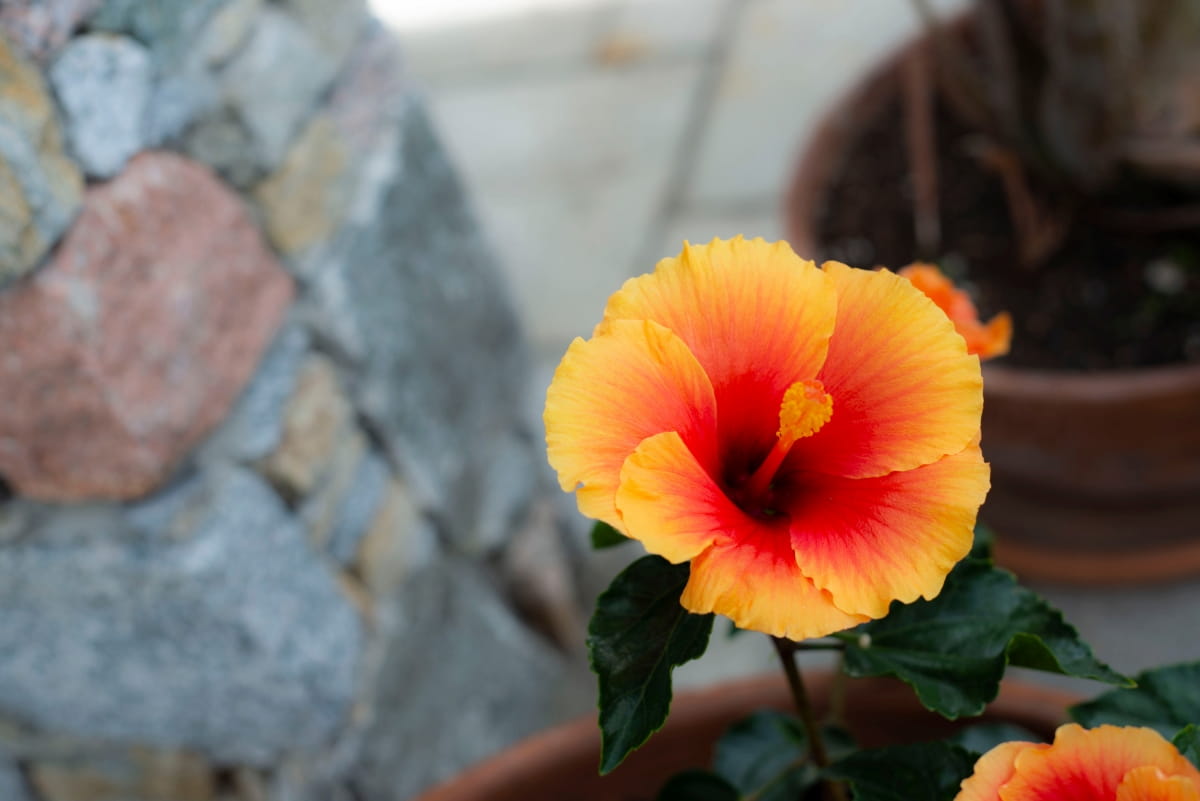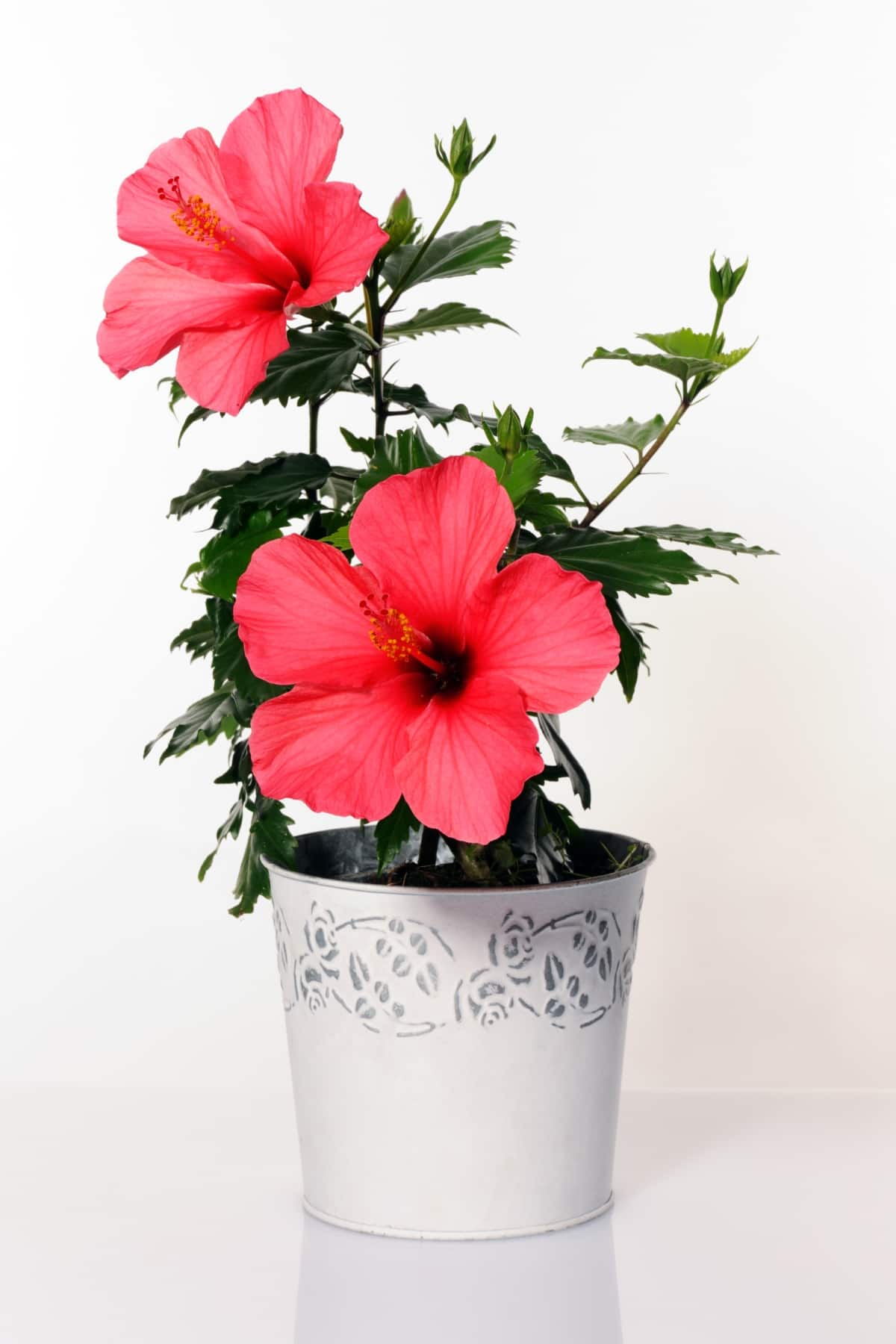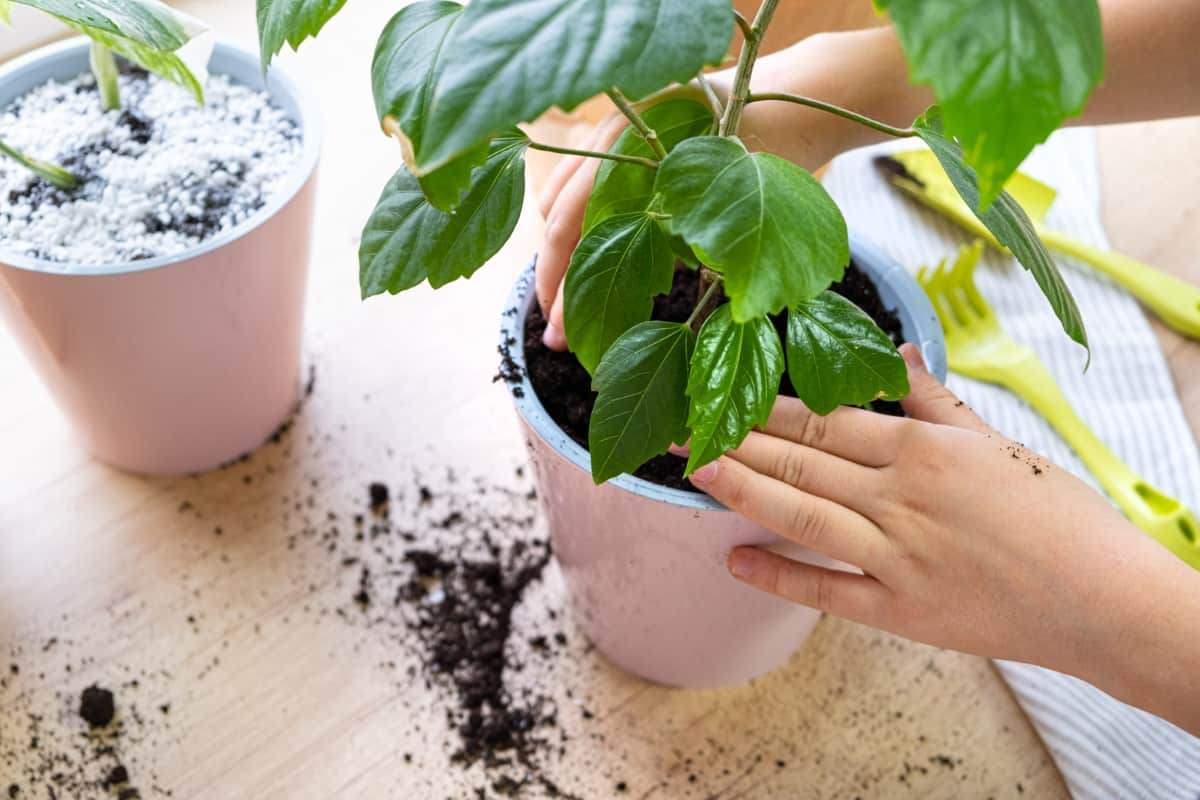If your potted Hibiscus is not blooming as expected, there are several factors to consider. From inadequate sunlight and improper watering to nutrient deficiencies and pests, identifying the root cause is essential for encouraging blooming. By addressing potted Hibiscus flowering problems and providing the right care, you can help your Hibiscus thrive and reward you with beautiful blooms. Remember that patience and consistency in care are key when it comes to enjoying a vibrant and flourishing potted Hibiscus plant.

8 Reasons Why Your Potted Hibiscus is Not Blooming
Watering Problems
One common reason why Hibiscus is not blooming in the pot is due to watering problems. Understanding the watering needs of your plant is crucial for its overall health and flowering potential. Overwatering deprives the plant of essential nutrients and oxygen. On the other hand, underwater can cause stress and hinder flower production. To ensure optimal blooming, it’s important to find a balance in your watering routine. Check the soil moisture regularly. Avoid following a strict schedule and, instead, adjust based on environmental factors.
Excess Nitrogen
Excess nitrogen can be a sneaky culprit when it comes to your potted Hibiscus not blooming. While nitrogen is crucial for plant growth, too much of it can lead to lush green foliage at the expense of flowers. The imbalance created by excessive nitrogen levels can disrupt the flowering process and leave you wondering why your Hibiscus isn’t showing off its vibrant blooms.
One common source of excess nitrogen is over-fertilization. It’s easy to get carried away with feeding your plants, but moderation is key when it comes to nutrient levels. Opt for a balanced fertilizer specifically formulated for flowering plants like Hibiscus, and follow the instructions carefully to avoid overdoing it. If you suspect that excess nitrogen may be hindering your Hibiscus from blooming, consider switching to a fertilizer with lower nitrogen content or adjust your feeding schedule accordingly.
Too much Phosphorus
If your potted Hibiscus is refusing to bloom, the culprit might be too much phosphorus in the soil. While phosphorus is crucial for plant growth, excess can cause Hibiscus pot plants not to produce blooms. When there’s an imbalance of nutrients in the soil, such as an abundance of phosphorus, it can disrupt the plant’s ability to uptake other vital elements like potassium and magnesium. This disruption can lead to stunted growth and a lack of blooms on your Hibiscus.
In case you missed it: 10 Reasons Why Is My Ice Plant Not Blooming: Remedies and Treatment

Excessive phosphorus levels can also have negative effects on soil pH levels, making it more difficult for plants to absorb certain nutrients they need to thrive. To maximize potted Hibiscus flower yield, consider using a fertilizer with lower phosphorus content or opting for organic alternatives that promote balanced nutrient uptake by your Hibiscus plant. By being mindful of the phosphorus levels in your potted Hibiscus’s environment, you’ll be one step closer to helping it bloom beautifully once again.
Poorly-Drained Soils
One common reason why your potted Hibiscus may not be blooming is due to poorly drained soils. When the soil doesn’t drain properly, it can lead to waterlogged roots, causing stress to the plant. This stress can inhibit flowering and overall growth. Excess water around the roots restricts oxygen uptake and nutrient absorption by the plant, hindering its ability to produce vibrant blooms.
To check if your soil drainage is an issue, observe how quickly water drains after watering. If it sits on top for too long or causes pooling at the bottom of the pot, you might have a drainage problem. To improve drainage, consider repotting your Hibiscus in a well-draining potting mix or adding perlite or sand to increase aeration in the soil. Additionally, ensuring that your pot has proper drainage holes can help prevent waterlogging and promote healthier root growth.
Too much Shade
If your potted Hibiscus isn’t blooming, it could be due to too much shade. Hibiscus plants require 6 hours of direct sunlight daily to produce those beautiful blooms. Too much shade can also lead to leggy growth and sparse foliage, further inhibiting blooming. Make sure your Hibiscus is getting the light it needs to grow healthy and vibrant.
Observe how the shadows fall throughout the day in your garden or balcony and find a spot that gets ample sunlight for optimal blooming potential. A little sunshine goes a long way when it comes to encouraging gorgeous Hibiscus flowers.
Temperature Fluctuation
Hibiscus plants thrive in consistent temperatures, so that sudden changes can disrupt their blooming cycle of Hibiscus. Fluctuations in temperature, especially drastic shifts between hot days and cool nights, can stress the plant and inhibit flower production. For optimal blooming, it’s essential to provide a stable environment for your Hibiscus.
In case you missed it: 10 Reasons Why My Potted Hydrangea Not Blooming: Treatment and Remedies

To help your potted Hibiscus overcome the challenge of temperature fluctuations, consider moving it to a more sheltered location where it is shielded from extreme heat or cold. This adjustment encourages blooming in Hibiscus plants.
Wrong Time to Prune
Hibiscus plants generally benefit from light pruning after their flowering period has ended. Avoid heavy pruning in late summer, as this can reduce the number of flower buds for the following growing season. It’s best to prune your Hibiscus during its dormancy period in late winter or early spring before new growth begins. By being mindful of when you prune your potted Hibiscus, you can help ensure that it thrives and produces an abundance of vibrant blooms for you to enjoy.
Attack by Pests
One common reason for potted Hibiscus not flowering as expected could be due to an attack by pests. These tiny intruders cause stress and hinder its ability to produce those beautiful blooms you’re eagerly waiting for. Pests like aphids, spider mites, and mealybugs are known culprits that can infest Hibiscus plants. They feed plant sap, weakening it and disrupting its growth cycle. Keep a close eye on the leaves and stems for any signs of these unwanted visitors.
In case you missed it: 10 Reasons Why is My Goldfish Plant Not Blooming: Remedies and Treatment

To combat pest infestations, consider using natural remedies like neem oil or insecticidal soap. Regularly inspecting your plant for early signs of pests can help prevent a full-blown invasion that could harm your Hibiscus further. By staying vigilant and taking proactive measures against pests, you can help ensure your plant thrives and eventually bursts into a stunning display of colorful blooms.
Conclusion
By understanding potted Hibiscus blooming issues and taking appropriate actions like adjusting watering schedules, balancing nutrients, ensuring proper drainage, providing adequate sunlight exposure, maintaining consistent temperatures, timing pruning correctly, and addressing any pest infestations promptly – you can help your potted Hibiscus thrive and bloom beautifully.
Remember that nurturing plants is a learning process that requires patience and observation. By staying attentive to your plant’s needs and making necessary adjustments along the way, you can create an environment where your potted Hibiscus will flourish with vibrant blooms for you to enjoy.
- Flower Garden Designs and Layouts for Beginners
- Planting and Spacing Techniques in Papaya: A Beginner’s Guide
- Growing Gold: Essential Techniques for Planting Pineapples
- How to Make Kalanchoe Plant Bushy: Home Remedies and Solutions
- 11 Reasons Why Your Gardenia is Not Blooming: Home Remedies and Solutions
- Eco Elegance: The Guide to Designing a Drought-Tolerant Landscape
- Gardening on a Slope: Strategies for Hillside Landscaping
- Nourish and Flourish: Top Organic Mulches for Thriving House Plants
- Everything You Want to Know about Indian Mogra Flower: Discover Uses and Growing